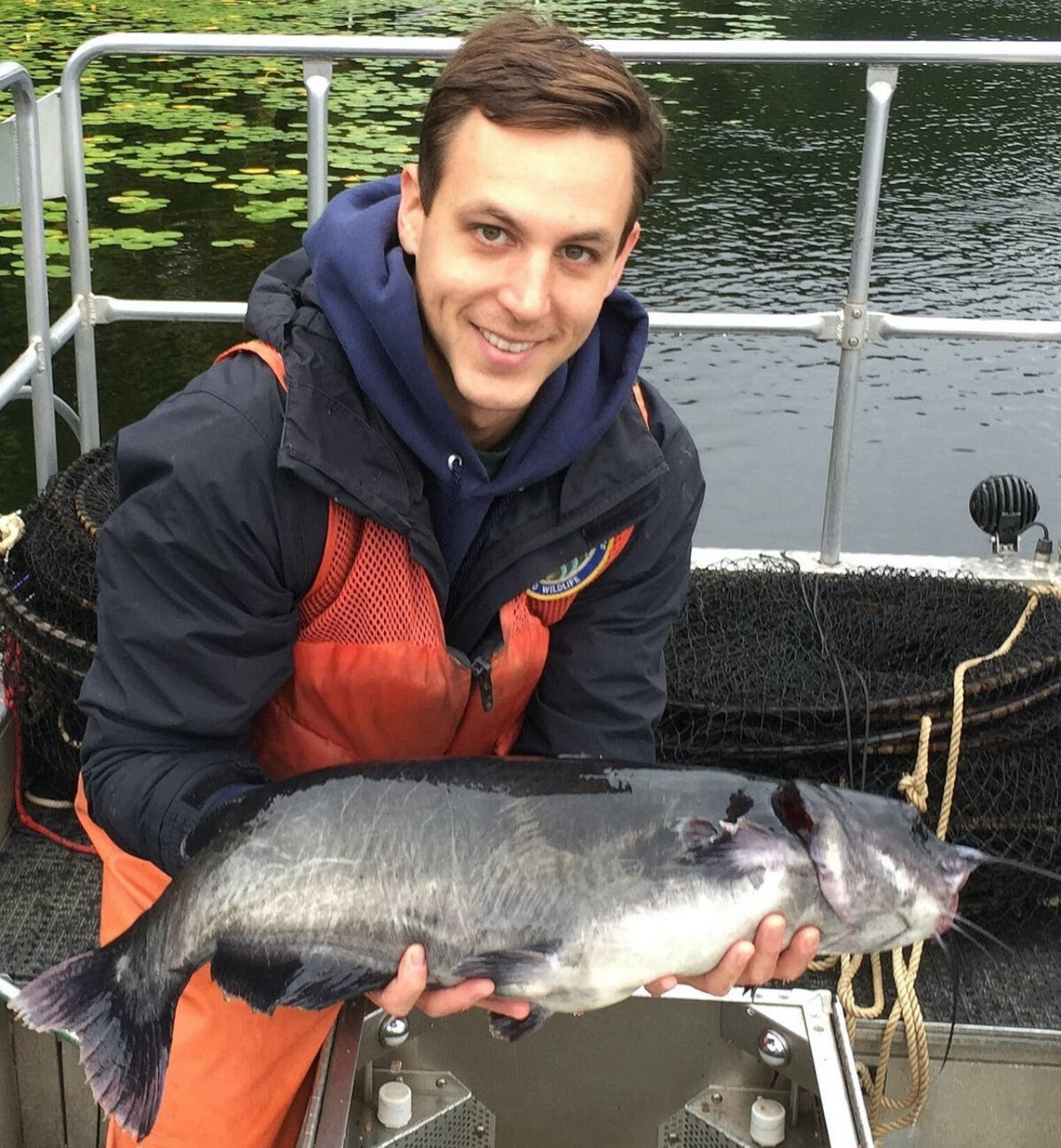
Cat’s Out Of The Bag! 1st Whiskerfish Release In Decade At Very Select WA Lakes
Washington warmwater fishery managers released 12,400 channel catfish into 12 lakes across the state this past spring, the first stocking of the long-lived and popular spinyrayed sport fish since 2014.
The whiskerfish were averaging about a pound and a dozen inches when set free, but they will do nothing but grow in the years ahead – unless harvested, which they’re meant to be.

WDFW estimates that 3,000 went into Campbell Lake near Anacortes, 2,000 into Liberty Lake by Spokane, 1,600 into Roses Lake by Chelan, 1,300 into Swofford Pond east of Mossyrock and 1,200 into Lake St. Clair outside Olympia.
The other seven waters all received either 300 or 500 apiece. Those lakes are Columbia Park Pond in Kennewick, I-82 Ponds 4 and 6 and Rotary Lake in the Yakima Valley, Whitestone Lake and Washburn Island Pond in the Okanogan Valley, and Kress Lake near Kalama.
“It took an incredible amount of effort on the part of the warmwater staff, hatchery staff and all involved to make sure we remained in compliance with the (Fish and Wildlife) Commission’s Non-native game fish and fisheries policy and make sure there were no conflicts with any species of conservation concern,” said Warmwater Enhancement Program Manager Kenny Behen.
Indeed, much has changed since 2014’s last stocking of channel catfish. Since then, WDFW and the commission has also moved to liberalize or eliminate daily and size limit restrictions on the species (as well as bass and walleye) across the state in an attempt to reduce predation on outmigrating salmon and steelhead smolts, many populations of which are listed under the federal Endangered Species Act and/or provide critical forage for southern resident killer whales.
On the flip side, this latest stocking makes explicit nonnative species such as catfish can exist and thrive in Washington and provide fisheries without potentially impacting native fish.

According to an article in the Spokane Spokesman-Review by Michael Wright, who last week broke the news about the program’s resumption, the release came about after a hatchery in Southeast Idaho began using broodstock channel catfish it acquired from an Arkansas facility, which was WDFW’s previous supplier.
Shipping the fish all the way from the South cost the agency a pretty penny back in 2014 and was logistically challenging given the need to swap out water along the way, but it’s much more doable to send state staffers and tankers over to Idaho and bring the fish back.
Behen said it was a “three (ish) day operation with lots of moving parts” and according to a WDFW, it cost $55,000.
“Next year we hope to double this year’s numbers and then establish regular intervals of supplementation to support this fishery,” Behen stated.
Plans call for stocking 30,000 at 19 lakes in 2025 at a cost of $100,000. The following year, if approved, WDFW would acquire 50,000 for 26 lakes for $133,000.
Catfish naturally reproduce in portions of the Columbia system, with the mouth of the Palouse particularly productive for anglers, but spawning is typically limited by cooler late spring water temperatures elsewhere in Washington.
Back in the early 2010s, channels were considered one of the Warmwater Program’s top priorities and a key way to get family, kids and nontraditional anglers to buy a license.
“I am extremely excited to get this ball rolling again, I know folks, including myself, love fishing for channel catfish,” said Behen. “Some of my fondest memories of my early career with WDFW were catfish assessments and creel surveys.”
